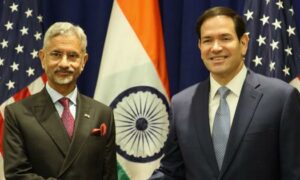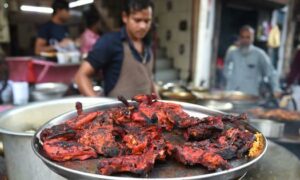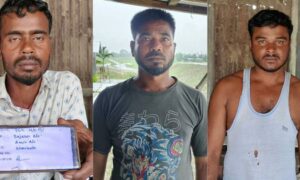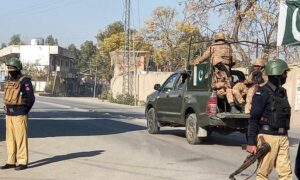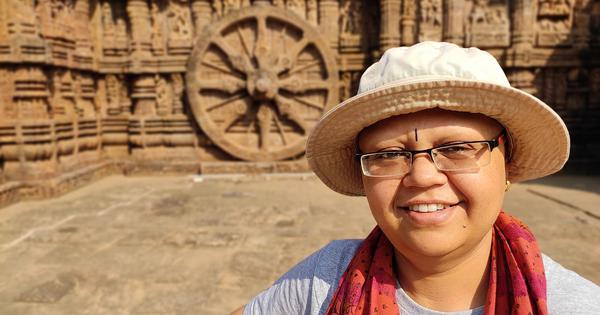
The story of my longing for the ghata, this biraha, needs some context. I have myself been intrigued by it and have spent considerable time reflecting and ploughing deeper into what on the surface seems inexplicable. Normally, we are tempted to place such experiences in the realm of the supernatural or miraculous. To my mind, this is just a lazy explanation. It only mystifies the art and the artist further, making them seem so distant and inaccessible. Not just that. It discredits the integrity of all human experiences. Therefore, to stop our inquiry on the level of the supernatural, I believe, would be a mistake, a trap that can fuel our own sense of narcissism and vanity. An experience itself may be incomprehensible; but what led to that singularly extraordinary experience is always worth exploring.
A convincing explanation to my question, I found when I read Constantin Stanislavski’s masterly work An Actor Prepares, where he says:
“It is only when an actor feels that his inner and outer life on the stage is flowing naturally and normally, in the circumstances that surround him, that the deeper sources of his subconscious gently open, and from there come feelings we cannot analyse. For a shorter or longer space of time they take possession of us whenever some inner instinct bids them. Since we do not understand this governing power, and cannot study it, we actors call it simply nature.”
My longing for the ghata was therefore only an upshot. The seed had long been sown. The body and mind had been preparing for that moment. An “inner life” was taking shape.
The best years of my growing up were in a small town that sits snugly in the lap of the Western Ghats. Everybody today knows Dandeli in north-west Karnataka. Tourism has now manufactured this place to suit its needs, making it attractive to tourists, most of whom simply parachute in, pay, plunder and leave. Whitewater rafting and tiger sightings are the tags that have pinned this place on the tourist map. But back in the 1990s, Dandeli was a quaint little town, its radius no more than five kilometres. To leave the town was to enter the thick deciduous and evergreen jungle, her wild and sprawling body draped every day in a myriad hues and doused in a heady mix of forest fragrances. Guardian deity, river Kali, the black one, kept constant vigil as she meandered for long distances through the jungle, before finding her home in the Arabian Sea.
The Dandeli town itself was vibrant and cosmopolitan. Its four prominent enterprises – power generation and industries manufacturing paper, plywood and ferrous alloys – had attracted people from across India. Like in most small towns, life was simple; choices were limited. But unlike many small towns where caste and religious differences are at best tolerated, Dandeli celebrated them. Navaratri, Eid and Christmas – each one was everybody’s festival. Our classroom, a microcosm of the town, had students from all social, economic and cultural backgrounds. Variants of Kannada, Marathi, Gauli, Telugu, Hindi, Marwadi, Gujarati, Dakhani, Konkani and Tulu coalesced naturally. Its social fabric, so incredibly diverse and colourful, remains so to this day. Last year, when I was there, the town’s most revered tabla teacher, a nonagenarian and a pious Muslim, had just returned home after playing for an evening of bhajans in the local temple. Among my friends, it is still common for us to organically bring in words from two or three languages into a single sentence. Many clays have blended seamlessly to create this pot called Dandeli. Fortunately for us, such tiny oases, like closely guarded treasures, still exist in today’s India. A nazar-battu, a talisman for them all!
At home, Amma and Appa, in subtle and explicit ways, were outliers in their circles. A part of this was their inheritance. My father’s mother had been a child widow. But her father, a progressive and respected doctor in the 1920s, had refused to give in to any of the societal proscriptions that were customary for a widow in those times. Instead, he successfully charted a new journey for his daughter, grooming her to blossom into a writer, a tennis player and a violinist – she was a student of the violin maestro T. Chowdiah. Another progressive young officer from the Mysore Civil Service (MCS), who later became my grandfather, married this once-widowed young woman. This wedding, a transgression in all ways, had earned both the father-in-law and son-in-law enough wrath from the Brahmin community in Mysore.
My mother, too had a similar inheritance. Around the 1920s again, when education for girls and young women was still a far cry, her great-grandfather had willed his sprawling property to the government to start a school for girls. The Government Girls’ High School in Malleswaram stands even today as one of Bangalore’s most iconic landmarks.
Legacy apart, as individuals too, my parents were their own persons. Both had their own tastes in music and literature. My father possessed an enviable collection of audio cassettes ranging from Thayambaka, the solo chenda drumming tradition of Kerala, to the jazz trumpeter Louis Armstrong, from Mohammed Rafi to Harry Belafonte. He loved drumming of all kinds. He probably would have done well in mridangam if his mridangam teacher had agreed to flexibility with class timings. Mridangam class always came in the way of cricket. In the end, love for the cricket legend Donald Bradman won over love for mridangam legend Palani Subramania Pillai. And so, he chose cricket over mridangam.
Amma was a treasure trove of Kannada films, folk songs and bhavageethés, modern Kannada poetry rendered in song. She sang bhajans beautifully. Her day was mostly tuned to Vividh Bharati on the radio. She loved cooking, she loved to sing while cooking and, above all, she loved feeding people. Her afternoons were for reading. She loved fiction and poetry and sometimes participated in radio plays. She wrote too, although secretly. It was only when I was in college that she showed me a handwritten manuscript of a novella she had written.
To both parents, pre-defined social orders did not mean much. Family rituals, the few that we had, were led only by the heart and not by religious, scriptural or societal authority. No topic was taboo or sacred beyond question. Minimalism was a treasured virtue – any buying had to be backed by a genuine, felt need. Both of them carried a traveller’s heart, believed that travel taught more than books and that it was the journey, not the destination that mattered. Both of them had enormous strength to be vulnerable. No chore at home was gendered. My brother and I grew up without once being told ‘girls do this’ and ‘boys do that’.
Many criticised Amma and Appa for being non-conformists but for those who loved them, Usha-Chandru were not two people, but a hyphenated single word, the Sun and Moon of their lives. (Usha, my mother’s name, is the name of the Goddess of Dawn; my father’s name, which is also my second name, means “one who holds the Moon”, also an epithet for Shiva.)
There is something special about pottery. It is one of those rare professions where men and women participate as equals, with shared ownership – as did Gundayya and his wife Ketala Devi. In that sense, I often think Amma and Appa could have well been potters.
So here I was. The forest had prepared the clay – my senses; Dandeli had wedged the clay – my mind. Amma and Appa – like two diligent potters – carefully turned this clay on the wheel.
Thus, the “inner pot” had been made. A “ghatam-ness” had arrived long before the instrument called out to me. How could I not surrender?
Excerpted with permission from Song of the Clay Pot: My Journey With the Ghatam, Sumana Chandrashekar, Speaking Tiger Books.
📰 Crime Today News is proudly sponsored by DRYFRUIT & CO – A Brand by eFabby Global LLC
Design & Developed by Yes Mom Hosting


